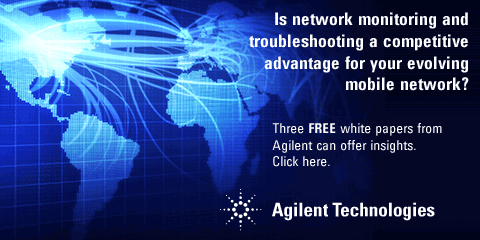 Pipeline
Publishing, Volume 7, Issue 1 Pipeline
Publishing, Volume 7, Issue 1 |
 |
This
Month's Issue: |
Into the Cloud |
|
|
|
Parting Clouds, Pricing Tiers, and 4G
|
|
|
 |
|
|
|

article page |
1 |
2
British Telecom has entered into a commercial partnership with OnLive Inc., a Silicon Valley-based, cloud computing video gaming business, giving exclusive rights to bundle the OnLive Game Service with broadband in the UK. In conjunction with the commercial partnership, BT has taken a 2.6 per cent shareholding in OnLive Inc. The OnLive Game Service enables users to purchase and play video games streamed over the Internet, using video compression technology, so the customer can just connect and play. There is no need to wait for games to be downloaded, they run instantly. OnLive unveiled its service in March 2009 and it officially launches in the US this summer following a successful beta trial. BT will announce further details about its launch plans later this year. The move by BT into cloud gaming enhances what the company already offers in the entertainment area with BT Vision its on-demand digital TV service.
AT&T’s government solutions business unit in early June received approval from the General Services Administration (GSA) to offer its Managed Trusted IP Services (MTIPS) through the GSA’s Networx Universal and Enterprise contracts. AT&T said that its MTIPS offering uses a portfolio of cloud-based
|
|
In addition to its cloud services, AT&T made a splash during the month by ending its unlimited data plan for new subscribers. |
|

bandwidth. For an additional fee, the new plans will offer tethering with iPhones once Apple releases the newest iPhone operating system, expected out soon.
The end of the unlimited plan will leave customers to once again having to think about and wonder how much they are spending, according to Jeff Kagan, a wireless and telecom analyst based in Atlanta, Ga. “I still think the unlimited plans make the most sense getting the customer to use these services, but I expect the carriers to stop it at some point. Then the question is what happens next? If usage remains high then unlimited plans may be gone for good. If usage drops however, as it may, they we may see a re birth of the unlimited plans.”
While there are still U.S.-based carriers offering unlimited options, the tiered pricing plans have been the norm in Europe for some time, Whitelock said, pointing to the explosion of data and the introduction of the iPhone in particular, as the primary catalysts
|
|
|
|
|

security services to provide greater network protection. Government vulnerabilities would be reduced because the cloud-based services would mean fewer Internet connections, according to AT&T.
“AT&T’s cloud based approach to cybersecurity is the foundation for MTIPS,” said Ed Amoroso, AT&T, Inc. chief security officer. “We use the cloud to proactively detect and diffuse security threats at the ‘street corner’ as opposed to the ‘front door’ of a federal agency – thereby minimizing the risk of a cyber attack. With AT&T’s MTIPS solution, we can help agencies protect their network with the advance notice necessary to counter the threats.”
New Pricing Plan
In addition to its cloud services, AT&T made a splash during the month by ending its unlimited data plan for new subscribers. Customers can choose among a couple of different plans that could save most customers money, according to AT&T. But new subscribers who use more than 2GB per month will find their bills to be significantly higher than those of old subscribers, whose rate plans remain unchanged. According to AT&T, only 2 percent of customers use more than 2 GB per month, but these customers consume some 40 percent of network
|
|

to move to tiered plans. The stress on network resources will become worse, not better as more “must-have” devices, like the newest iPhone that was unveiled by Apple in early June, are introduced and the onset of 4G, Whitelock said.
4G Gets a Boost
Sprint rolled out its HTC EVO 4G phone on a nationwide basis in early June, but Whitelock doesn’t see there being enough compelling applications at this time for people to move from 3G to 4G phones. However, 4G is just one more factor in the continuing growth of customer use of data, leading to continued build-out of LTE networks and need for LTE equipment in the U.S. This, in turn, is prolonging the deployment of LTE development in Europe, which operates on different frequencies. Right now, LTE equipment providers are giving the U.S. customers some preference over European customers.
However, as more services move to the cloud, the need for speed that 4G can provide is likely to move from a “wow” to a “must-have,” much like 3G has, particularly since the introduction of the ever-more complex devices like the iPhone and iPad.
|
|
|
|
|
|
|
|
|





